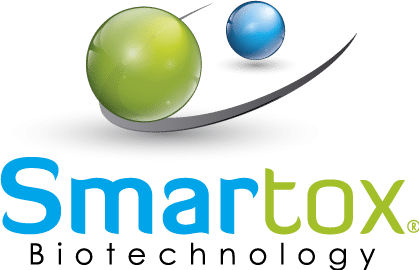Description
| AA sequence | H-ECESGPCCRNCKFLKEGTICKRARGDDMDDYCNGKTCDCPRNPHKGPAT-OH |
| Disulfide bond | 2-11, 7-32, 8-37, 20-39 |
| Formula | C217H341N71O74S9 |
| MW | 5417,05 g/mol |
| Purity | >95% |
231 € – 704 €
Echistatin was originally purified from the venom of the viper Echis carinatus. Echistatin is a cyclic RGD peptide that inhibits platelet aggregation by inhibiting the glycoprotein IIb/IIIa complex receptor. Echistatin is a potent disintegrin that antagonize αVβ3 integrin and has been described to inhibit cell proliferation, migration, invasion, and adhesion of αVβ3 expressing cells.
| AA sequence | H-ECESGPCCRNCKFLKEGTICKRARGDDMDDYCNGKTCDCPRNPHKGPAT-OH |
| Disulfide bond | 2-11, 7-32, 8-37, 20-39 |
| Formula | C217H341N71O74S9 |
| MW | 5417,05 g/mol |
| Purity | >95% |
A 49-residue protein, echistatin, which inhibits platelet aggregation, was purified from the venom of the saw-scaled viper Echis carinatus. The purification procedure included gel filtration on Sephadex G-50, cation-exchange chromatography on Mono S, and C18 reverse-phase high pressure liquid chromatography. The purified protein was homogeneous as judged by polyacrylamide gel electrophoresis, isoelectric focusing, reverse-phase high pressure liquid chromatography, and NH2-terminal sequence analysis. Echistatin is a single-chain polypeptide with a molecular weight of 5400 and a native isoelectric point of 8.3. The most abundant amino acid, cysteine, accounts for 8 of the 49 residues in the protein. A 10-residue segment of echistatin shows 90% identity to a portion of the sequence of trigramin, a platelet aggregation inhibitor from the green tree viper Trimereserus gramineus (Huang, T.-F., Holt, J. C., Lukasiewicz, H., and Niewiarowski, S. (1987) J. Biol. Chem. 262, 16157-16163). Echistatin contains the sequence arginine-glycine-aspartic acid, which is common to proteins which bind to the glycoprotein IIb/IIIa complex. It also contains the sequence proline-arginine-asparagine-proline, which is found in the A alpha chain of human fibrinogen at position 267-270. The purified protein inhibits fibrinogen-dependent platelet aggregation initiated by ADP with an IC50 of 3 x 10(-8) M and also prevents aggregation initiated by thrombin, epinephrine, collagen, or platelet-activating factor. Reduction of echistatin abolished its inhibitory activity.
Angiogenesis is a critical determinant of tumor growth and metastasis. We hypothesized that contrast-enhanced ultrasound (CEU) with microbubbles targeted to alpha(v)-integrins expressed on the neovascular endothelium could be used to image angiogenesis. METHODS AND RESULTS: Malignant gliomas were produced in 14 athymic rats by intracerebral implantation of U87MG human glioma cells. On day 14 or day 28 after implantation, CEU was performed with microbubbles targeted to alpha(v)beta3 by surface conjugation of echistatin. CEU perfusion imaging with nontargeted microbubbles was used to derive tumor microvascular blood volume and blood velocity. Vascular alpha(v)-integrin expression was assessed by immunohistochemistry, and microbubble adhesion was characterized by confocal microscopy. Mean tumor size increased markedly from 14 to 28 days (2+/-1 versus 35+/-14 mm2, P<0.001). Tumor blood volume increased by approximately 35% from day 14 to day 28, whereas microvascular blood velocity decreased, especially at the central portions of the tumors. On confocal microscopy, alpha(v)beta3-targeted but not control microbubbles were retained preferentially within the tumor microcirculation. CEU signal from alpha(v)beta3-targeted microbubbles in tumors increased significantly from 14 to 28 days (1.7+/-0.4 versus 3.3+/-1.0 relative units, P<0.05). CEU signal from alpha(v)beta3-targeted microbubbles was greatest at the periphery of tumors, where alpha(v)-integrin expression was most prominent, and correlated well with tumor microvascular blood volume (r=0.86). CONCLUSIONS: CEU with microbubbles targeted to alpha(v)beta3 can noninvasively detect early tumor angiogenesis. This technique, when coupled with changes in blood volume and velocity, may provide insights into the biology of tumor angiogenesis and be used for diagnostic applications.
The in vitro efficacy of the disintegrin echistatin was tested on a high-metastatic variant of 143B human osteosarcoma, 143B-LM4, which over-expresses αvβ3 integrin. Echistatin is an RGD cyclic peptide and an antagonist of αvβ3 integrin. In the present study, echistatin inhibited cell proliferation, migration, invasion, and adhesion of 143B-LM4 cells. 143B-LM4 cell proliferation decreased after treatment with echistatin in a time-dependent and dose-dependent manner (P <0.01). In vitro migration and invasion of 143B-LM4 cells were also inhibited by echistatin in a dose-dependent manner (P <0.01, respectively). Cell adhesion to vitronectin of 143B-LM4 cells was also inhibited by echistatin in a dose-dependent manner (P <0.01). These results suggest that αvβ3 integrin may be an effective target for osteosarcoma.
We use cookies to optimize our website and our service.

